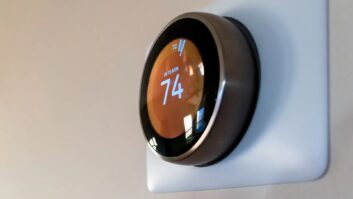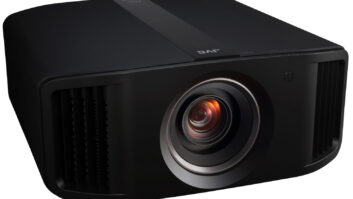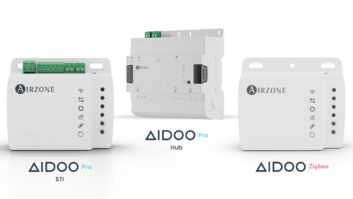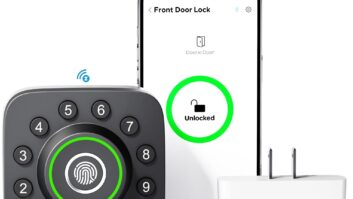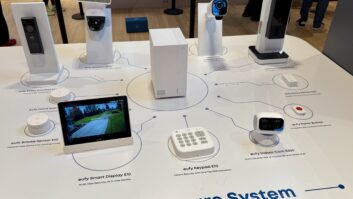By having shipped dozens of pre-draft 802.11n products during the past year and with many more in the 2007 product pipeline, home networking vendors have essentially told the IEEE that its approval for the new wireless specification, while nice, is not necessary for the category to be a success with consumers.
This comfort networking makers feel with the their current pre-draft 802.11n product crop is obvious here at CES this week as each company rolls out additional pre-draft n routers and peripherals which each company feels is very close to what will be finally approved by the IEEE and all of which should be fully upgradeable through a downloadable patch to match the final specification.
Rejoining the networking party on the wired side this year in a big way is the category’s old friend powerline, which has again been given new life by becoming a potential conduit for streaming HD content around a home. This is due to a bandwidth breakthrough enabling data streams in the 100MBps range.
However, 802.11n is expected to garner most of the spotlight this year.
The biggest boost for the 802.11n segment will come in mid-2007 when the Wi-Fi Alliance will certify the 802.11n specification. The certification is not a replacement for the IEEE’s final say on the matter, but every networking company spoken to say the Wi-Fi’s thumbs up will make their lives much simpler until the IEEE makes its thoughts known in 2008. The Wi-Fi Alliance is now putting most pre-802.11n products through basic compliance testing to ensure those on the market are cross compatible. Once this is done compliant products will hang a “Wi-Fi Alliance Certified” logo on their boxes.
“This third party endorsement will be a huge help and put 802.11n over the top,” said David Henry, Netgear’s product marketing director, consumer products.
The certification’s benefits will be wide ranging. Consumer electronic and IT vendors will be assured that draft-n products will work together so these manufacturers can go ahead and include them in upcoming products even though the final spec has not been set. The other beneficiary will be consumers.
“This will give consumers, at least the educated who know about 802.11n, peace of mind,” said Eric Deming, Linksys’ senior product marketing manager, consumer business organization, “The n spec is now very stable with the only thing still up in the air being the optional features.”
Peace of mind over 802.11n’s fate is needed by vendors as well. Wi-Fi Alliances’ certification is likely to spur CE and PC companies into integrate Wi-Fi into their devices, which is a necessity for the format to succeed, said Brian Verenkoff, Buffalo Technologies product manager.
“If the point of n is convergence then n needs to be incorporated into these types of devices,” said Henry, and this is starting to happen.
The first Wi-Fi-equipped CE products started shipping in 2006, one being a Hewlett-Packard LCD TV, and more are now expected by the tail end of 2007.
The other big lift for 11n will take place about the same time as the Wi-Fi Alliance certification comes through when suggested retail prices for pre-n products are expected to drop to the $99 level or about $30 below what was available in late 2006. The sub-$100 price point was breached by a few companies with rebates during the holiday period, but these were more the exception than the rule.
Jonathan Bettino, Belkin’s senior product manager for networking, said the lower price point will help drive adoption as it make 11n comparably priced with the 802.11g product, but giving consumers all this bandwidth leads to the next fence the industry needs to hurdle. Primarily, what to do with the 30MB to 100MB per second data stream 11n delivers.
With HDTV adoption still in its early phase, companies have to come up with other products that make use of 11n.
“People are not yet streaming HDTV,” he said.
Linksys’ plan is to introduce application specific routers including one for gaming and another for multimedia, said Deming. The gaming model will prioritize the gaming data packets creating a better wireless gaming experience. The multimedia device will have a USB port for attaching an external hard drive, which would store content, and be dual band, 5GHz and 2.4GHz.
“N has the ability to have flavors so you can give the customer just what they want,” Deming said.
The other networking story for 2007 will be powerline. After years of playing second fiddle to Wi-Fi due to its higher cost and lower bandwidth, powerline is about to find its niche through the mass adoption of the Powerline A/V specification by vendors. The HomePlug Alliance passed the Powerline A/V specification in mid-2005.
Linksys’ Deming said Powerline A/V is well suited for streaming video and in its own way is also a wireless technology in that no additional wiring is needed. Since it uses an open source specification making it cross brand compatible, there is no reason why the consumer electronics companies should not adopt it and start integrating it into their products. Linksys will launch a powerline kit this week at CES for $200 that will included two Ethernet bridges with data rates typically around 30MB per second, although in optimum conditions 100MBs is possible.
Powerline’s possibilities are now so strong that companies which had earlier eschewed or abandoned the technology are taking a second look.
Belkin’s Bettino now considers powerline a potential growth area even though his company dropped it once Wi-Fi took off.
Buffalo Technology is being a bit more bearish on the subject.
“There was a time when Buffalo would never consider it, but now we are keeping an eye on powerline. There is nothing coming from us in the near future. We want to see if consumers jump on it,” said Verenkoff.
Besides being able to stream video around the home to CE devices Netgear sees powerline as a quick patch for several of Wi-Fi’s inherent and unfixable shortcomings, namely its range and dead spots, said Henry. So instead of cannibalizing Wi-Fi sales powerline should act as a supplement.
The advent of downloadable Internet video and more products on the market will give powerline products a much needed higher public profile, Henry added.
“Consumers still don’t understand powerline, but we see a sales up tick whenever there is a positive product review in the press or a new product is introduced,” he said.







